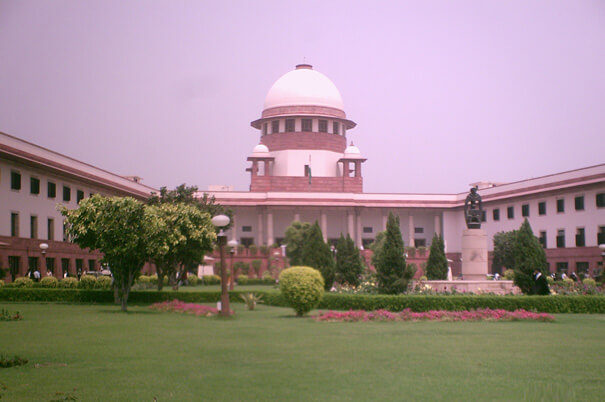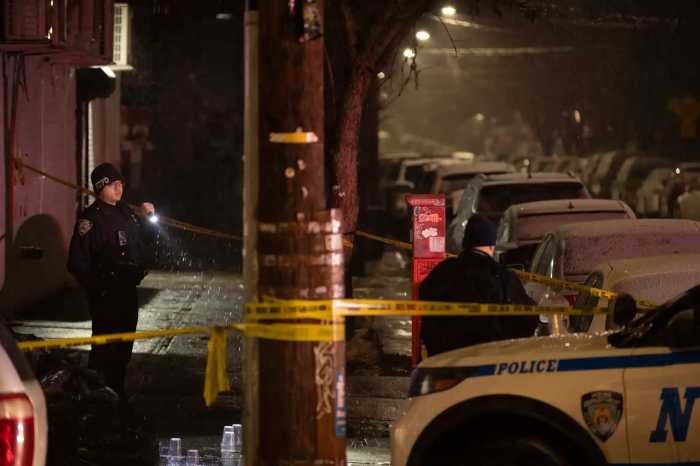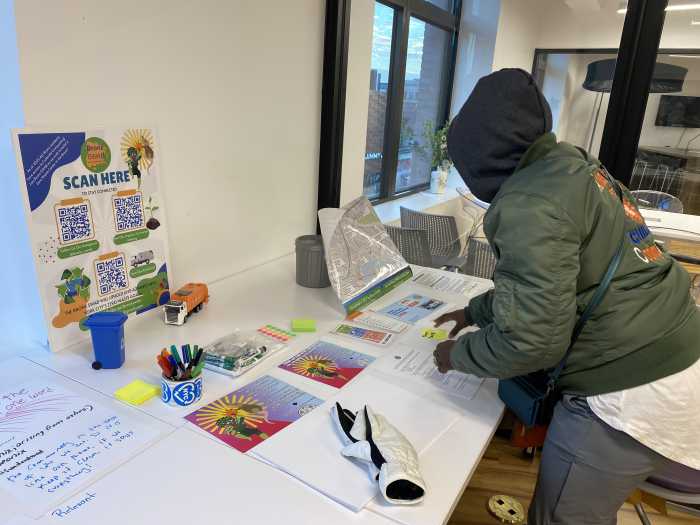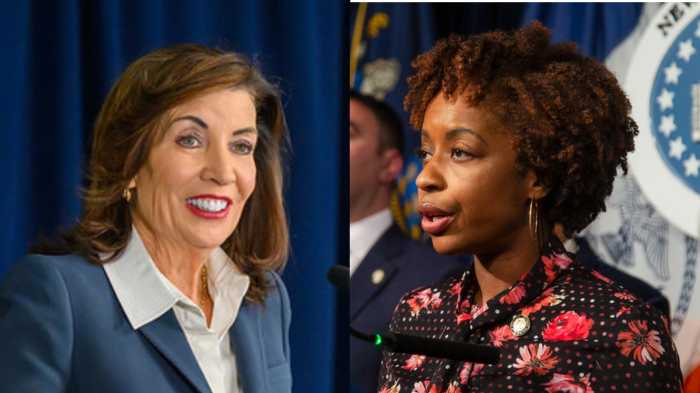The Taj Mahal at dawn. | PERRY BRASS
India had always been a distant dream of mine, starting decades ago when I met George Michell, an authority on Indian temples who encouraged me to make the trip. I never did. Not only was it far away, but hazardous, with everything from “Delhi belly” to malaria lurking there. Finally, at 70, I decided to do it. My husband Hugh Young admitted that the Taj Mahal was on his own bucket list. George offered to write an itinerary — 12 days in India.
“Most tourists,” George said, “make the mistake of landing in a big Indian city, like Delhi or Mumbai, and spending their first three or four days in the middle of Third World squalor. They never get over it, and never want to come back.”
Instead, for a trip starting on February 19, in Rajasthan’s dry cooler season, we would fly into Delhi and then immediately fly to Udaipur, a beautiful Mogul palace-city on a lake, about 400 miles away. George referred me to a friend, Sarah Mahaffy from Quo Vadis Travel in London, who specializes in individualized tours of India. Sarah got back to me and we had a plan: we would do the famous Golden Triangle of Northern India — Delhi, Jaipur, and Agra, beginning in Udaipur, with a stop in Jodhpur. She sent me an itinerary along with extensive “Notes for Travelers.”
Golden Triangle reveals a family-based society bustling, welcoming, and discreet
Basically: Don’t touch any water not in a bottle, even to brush your teeth. Stay away from anything that can’t be peeled, also from fish unless you are in a coastal area. And don’t go near dogs or monkeys. I thought the latter was ridiculous: how would I go near a monkey?
Later, I learned monkeys were all over India, sometimes right in front of you. So don’t touch them. They can bite.
Now came the hardest part, applying for an Indian visa. They are ridiculous, taking hours to apply for, and can be rejected by the consulate for any reason. India does offer an E-visa, but once there you can be required to stand in line for hours to convert to a regular one. Sarah suggested we get a “real” visa, since our connecting flight to Udaipur would not allow time for bureaucracy.
Young people in Delhi, outside Purana Qila, a large park dotted with Islamic tombs and monuments. | PERRY BRASS
You have to list a profession on the application. I decided to apply as a journalist but learned I’d need several letters of employment or accreditation. I also thought I should say Hugh and I were married, but the application demanded the names, birth dates, and countries of origin of both sets of our parents. When I complained to Sarah, she told me, “Don’t tell them you’re married. It will not work in India!”
Finally, Sarah referred me to Travisa in New York, an agency that guarantees your visas. They were encouraging, kindly, and charged us $430 per visa — although it’s a 10-year one. A whopping fee, but worth it.
I decided while in India I should contact India’s still extremely marginalized LGBTQ movement. Homosexuality was recriminalized by the conservative Bharatiya Janata Party, known for Hindu fundamentalism, a few years ago, although there have been some strenuous attempts by the LGBQ movement there to reverse that. Years ago, for a site called Gay Today I‘d done an email interview with Ashok Kow Ravi, called the “Harry Hay of India.” For years, Ashok was virtually the only gay activist on the subcontinent. He is still alive, and I tried to re-contact him. My email bounced back. By chance, I connected with Richard Ammon, a California-based international liberationist, who gave me a list of activists and their email addresses. I emailed each, and got no replies.
India is huge, but I was hoping there would be someone to meet in Delhi. I wrote to India’s national LGBTQ magazine, Pink Pages, telling about my plans. No reply. Later I began to understand that in India relationships were made personally, not through email or social media connections, important in the US. Though there’s a thriving queer movement in India, it cannot be experienced or engaged through a website.
The flight to Delhi was 14 hours, but with the help of a Valium, I slept through most of it. In Udaipur, we were met by an agent for Quo Vadis and our driver, a wonderful young man named Satjiat who stayed with us for the entire trip. Our hotel in Udaipur, the Amet Haveli, was right on Lake Pichola, the town’s central body of water. Our room was huge, with lots of sitting areas and alcoves with views of the lake. In the morning, at breakfast, you could see young men from a nearby temple bathing in the waters. Haveli in Hindi means a princely home; many hotels in India have Haveli in their names — they were once the homes of princes who after Independence no longer had enough income to maintain them.
Cows, sacred to Shiva, are all over India, and feeding them is considered part of Hindu devotions. | PERRY BRASS
On our first morning, our guide, an older man named Mandu, took us to our first Hindu temple, crossing a short, cow-strewn bridge to get to it. India, even in small Udaipur, is overwhelming: the constant, crowded, inventive craziness of people moving about on scooters, some carrying three, four, even five people, bicycles, cars, trucks, women in brilliant saris, and cows everywhere. On the road, people greet you with “Namaste,” a great show of their friendliness mixed, as well, with a strange colonial formality.
Mandu wanted to know if we were married men. Taking our cue from Sarah, we said we were both single — with no children.
“Have you been friends with each other for a long time?,” he asked. I answered, “Thirty-seven years.”
He nodded, as though a little light had flicked on in his brain.
The temple, not a particularly big one but active, was amazing. You were not allowed to take pictures inside, and you left your shoes outside in the care of a shoe man, whom you tipped about 10 rupees, something like 14 cents. First you passed through a series of stone gates, then an outer room, and then into the inner temple, where dozens of worshippers were either seated on pillows on the floor, stood, or were perched on stone benches. A screen separated you from the god, Shiva, seen as either a statue or a lingam — a stone phallus, a major manifestation of him — and a priest who spoke directly to the god.
Shiva also always has a stone bull, positioned for worshippers to approach. The bull is the messenger of the god, who also rides on it. If you whisper into the bull’s ear, Shiva will hear you.
In the Hindu trinity, Brahma is the Creator, Vishnu the Preserver, and Shiva the Destroyer, but out of destruction always comes creation, so Shiva-worship is extremely common throughout India.
There is constant singing, music, chanting; I noticed several worshippers were Westerners who, like hippies from another era, were in India for spiritual reasons. They were dressed in old-school Indian-hippie style: loose, billowy pants or skirts, colorful vests, often gray ponytails on the men. Mandu told us that we needed to be quiet; this was a sacred space and people were easily offended.
The thick smell inside was of incense, flowers, and bodies — flowers being brought in as an offering, with many people outside selling them in small bouquets or garlands. When we left, Mandu passed a small stone urn holding a thick paste of vivid magenta pigment. He dipped his finger in it and put a small dot on each of our foreheads.
“This is called a bindi,” he said. “It means you have performed a devotion today.”
Young Sikh men and boys during Holi, the Hindu Festival of Colors, in early March, embraced widely in the Indian subcontinent. The colors of the turbans signify either the caste of the wearer or valued characteristics, with orange meaning courage and wisdom and pink favored for holidays. | PERRY BRASS
I noticed that several of the worshippers had other marks on their foreheads, some in yellow and green. He explained that these denote what branch of Hinduism you follow — meaning which god you particularly follow, such as the Shaivites, who follow Shiva, or the Vaishnavas who follow Vishna — or your caste. When I asked him what caste he was in, he told us that he was not in a caste at all.
“I’m a Muslim.”
Later in the afternoon we went to Jagmandir Island, once a pleasure island for the Mogul maharajas of Udaipur, where they entertained wives and friends during the summer heat. The island now has an upscale hotel, a posh restaurant, and a large area for weddings. The entire staff was being directed for a wedding we saw preparations for: hundreds of guests, a special kitchen set up, and a huge space for the wedding ritual itself. Weddings take place in special pavilions like this; afterwards the married couple go to a temple to make an offering and receive a blessing from the god. Mandu explained that weddings were the most important event in the Indian lifespan of both Hindus and Muslims: couples and their families go into debt for years to produce a lavish wedding beyond their means. He, like all the guides we had, had an arranged marriage.
Arranged marriages are outside American cultural experience, but he explained, “They really do work. We have in India only a 15 percent divorce rate.”
“Yes,” I joked. “And a lot of cheating around.”
He looked stunned when I said that, then admitted, “Yes, there is some of that.”
Later, we went to the great white City Palace which presided over one side of the lake, and climbed up a ridge through a series of interior courtyards, public rooms, and private areas that ended in a parapet with views of the whole landscape.
The palace was also a fort. In India, the terms “Palace” and “Fort” are close to interchangeable: through centuries of constant princely warfare, often over nothing more than who should receive homage from whom, or whose daughter or son was not considered marriage material by a neighboring king, all palaces had to be secured inside a fort.
Two women in a bazaar. | PERRY BRASS
Since war, fighting, and hunting were the chief occupations of the state, Indian society was extremely male-dominated, both in the Muslim and Hindu spheres, and keeping women secluded, ignorant, and subservient was a preoccupation.
I pointed this out to Mandu.
“Yes,” he admitted. “But we have had two women presidents, and you have had none!”
That evening I got to see India a bit closer at a folk dancing recital inside old Udaipur. Hugh was exhausted, and Mandu offered to escort me alone to the recital held in a community performance space. I arrived early and was treated very courteously. The space was outside, under an open sky, and as it got darker it became packed, mostly with young Indians excited about preserving their heritage. This was not Indian classical dancing with its intricate patterns of finger and foot movements, but robust village dancing, often on themes of courtship and marriage — done mostly by women in colorful, heavily embroidered silk and cotton costumes, flashing with gold and silver spangles. Music was live; the young audience clapped or snapped their fingers in time.
The next day we drove out of town to the abandoned temple at Eklingji, started in the eighth century, completed in 11th and 12th centuries, and in operation until the 1600s, now a UNESCO World Heritage Site, also popular with young Indians. Mandu pointed out ancient erotic Kama Sutra sculptures on the outer façade, including a graphic one of a woman giving a man a “blowie,” while she is being entered from behind. He explained that the idea is that you “leave all of your sexual temptations outside and go inside the temple purified.”
Other guides told me otherwise: that sex was simply another manifestation of the life force, like water, which was also always present in temples — either symbolically, through stone renderings of conch shells and waves, or literally, with statues of the gods offered water for washing every day and the spent water trickling through the temple grounds from decorated stone spouts.
The author (right) and Hugh Young in front of the Emperor Humayun’s tomb, the precursor to the Taj Mahal and the first “garden tomb” in India. | COURTESY OF PERRY BRASS
Afterward, we drove to a larger active temple. Here a number of young couples were entering barefoot after their marriage ceremonies. The women wore lots of gold jewelry and elaborate wedding saris shot with bright metallic threads, their hands and feet decorated with intricate henna designs. The men wore more dark formal suits, although some grooms, obviously poorer, wore only jeans and a jacket. Some brides were veiled. People bowed to the couples in acknowledgement of this extremely important ritual in their lives: marriage, I understood, did not simply link two people of the opposite sex, but two families and their extended communities, now bound together permanently.
At our next stop, Jodhpur, we stayed at the Raas Haveli Hotel, an extremely modern, designer creation built next to a mosque. We were awakened at 6 a.m. by the amplified sound of the muezzin calling worshippers to prayer. Our room was beautifully appointed but not sound-proof, so earplugs were placed on each side of our large double bed, one of two such beds in the room. Getting to the hotel was not easy, driving through enough traffic to make a New York rush hour look like a picnic. We were greeted with mint tea and cookies, and a bindi placed as a “welcome” on our foreheads.
The Raas, several connected buildings on a steep rise, had a swimming pool, an extremely good restaurant, and a wonderfully attentive staff. A mark of India is how kind people are in any commercial situation; in a country of 1.3 billion, with a large unemployment rate, any job is considered a special calling, with many expected courtesies attached to it.
Our guide in Jodhpur was a young, tall, beefy man named Goldie. He explained that “Goldie” was a nickname because as a large, very desired boy-child he was deemed in his family “the Golden One.” Our first stop was at the Royal Crematory, actually a series of small, marble, beautifully decorated monuments, or cenotaphs, near the Mehrangarh Fort, for the royal family of Jodhpur. Memory is important in India, where close to a million gods are worshipped and memories easily become myths. Goldie introduced himself to us as a Hindu of the Warrior Caste.
“It is the second caste after the Brahmans, the priests,” he explained.
He then told us about the “14 Sacraments of Hinduism, something even some Hindus don’t know about,” which were fascinating to me, if not a bit chilling because they locked you into a family structure that I, as a gay man, could easily imagine not wanting to be locked into — and which, I learned, were still very much followed by Indians today. The sacraments begin at conception, rather than birth. After birth, the date of your conception is determined by a Brahman, who also decides your birth sign, very important for major life decisions, which is also linked to your conception.
Young Indian men are often publicly affectionate with each other, but displays of sexual affection, such as kissing, are very frowned upon among all adults. | PERRY BRASS
The next sacrament is when a Brahman assigns an alphabet letter to you, based on your astrological sign. The letter will be then given to an elder relative who alone will decide what your name will be.
Hindus do not circumcise, but numerous other sacraments connect the child to family and community. A ceremony is held when the child is weaned off mother’s milk, when the child has their first solid meal, when the boy infant’s head is shaved or the girl’s hair is braided, and when the child is brought for their first real temple visit.
There is also a sacrament when the young-adult male is brought into the temple to proclaim his virginity before marriage, a sacrament of proclaiming a forthcoming marriage, and, of course, the wedding itself.
At each sacrament, the whole family is brought in, including distant relatives and family friends. Finally, at death, the family assembles again: to wash the corpse and arrange the cremation, which must happen two days after death. The cremation happens outside, by a moving river.
“When the body has been 80 percent consumed by firewood, the eldest son will be brought forth to do another sacrament — to smash the skull with a wooden pole, so that the soul will be released from the skull and can fly up to heaven,” Goldie explained. “A short time later, the ashes will be upturned into the river, to join the origin of all life, water.”
I asked Goldie what happens when there’s no eldest son for this?
“Then another relative is adopted to do it, and as a major heir, he is given a large part of the estate.”
Listening to Goldie, I clearly understood something important about India: in this teeming, crowded country, family and the connections with it are the only protection you have. The Hindu sacraments make sure that you can never leave the family — which, again, must make life for many of today’s out gay Hindus… well, Hell itself, or a Hindu version of it.
After Jodhpur we drove on to Jaipur, through a long, mostly listless expanse of flat countryside, avoiding the ever-present cows, packs of bony dogs, and people who simply wander onto the highway. Road rage, Satjiat informed us, is common in India. So is rape.
“Women are safe in America,” he said. “But not India. We have a lot of rape. A woman is afraid to be alone here after dark.”
In Jaipur, we stayed at the Samode Haveli, one of the great old British Raj-style hotels. We had another local guide, a late middle-aged Muslim man named Hamdu, who took us through the Amber Fort, another huge edifice perched above a city. As part of a brigade of tourists, we rode up to the fort on the back of an elephant. Barely seated in a swaying howdah, I was terrified of falling off. This always looked so much better in movies! (And with the trail up to the fortress thickly littered with elephant dung, you don’t want to know about the smell!)
Hamdu, like most guides, asked if we were married. We answered no.
“Do you have children?”
I said no.
“Then you are all alone,” he said emphatically.
“No!” I countered. “Why would I be alone?”
He realized he had gone too far, and apologized. I explained to him that in America, especially New York, being single does not at all mean you are alone.
This came, strangely, as new information for him. I thought: Hadn’t any other American explained this to him before? India still wants to be its own world. It almost can be, it’s so big. It is forecast that in 10 years, its population will exceed China’s, where birth control and education have put a rein on overpopulation. Thirty percent of Indians are still illiterate; the vast majority live in villages where honor killings are still done to couples who marry outside their caste.
The author, in a turban lent to him, with a group of tourists inside the great fort of Kumbalgarh, a UNESCO World Heritage Site with some of the biggest walls outside the Great Wall of China. For many Indians, having your picture taken with a foreigner is considered good luck. | HUGH YOUNG
At this point, Hugh and I experienced something I’d never had before: true culture shock. You feel exhausted by everything — the sheer strangeness of it all and the myriad contradictions of India, like seeing groups of young men holding hands on the street, but most people not touching at all, even when crammed onto scooters; the sheer sweetness of Indians, then the thought of honor killings, rape, and other violence. And the constant tipping: everyone wanted to be tipped for almost anything, so you had to make decisions all the time about when and how to do it. Finally, the strange combustibility of India’s almost routine seductiveness and as well as its homophobia… and then the hijras.
Hijras are India’s transgender women; historically, many were eunuchs. We asked the guides about them; at first they pretended not to know, then admitted they did exist.
“Often at weddings where they perform music, or ask for money in exchange for blessings,” we were told.
I started to recognize them on the streets or coming out of shops, bigger than the average Indian woman, with a more aggressive walk or a slight shadow of beard. They were often at stalled traffic intersections, asking for money from motorists. I pointed them out to Hugh and was sorry that in the rush of our tour I never got to speak to one, but this would have probably required a guide or translator, as well, and the chances of all of that occurring were slim.
Finally we got to Agra and the Taj Mahal. Our guide was a charming, youngish, 30-something Hindu Brahman who went by K-K, a stand-in for a much longer name. K-K was trained as an archeologist and was the most personable of our guides. At one point he said to us, “Ask me anything you like about India, anything at all.”
I had to ask him, “I noticed that touching is difficult in India — you see young men and boys touching, even holding hands, but mostly people keep apart from each other. Especially on scooters — people riding on them don’t hold on to each other. Am I wrong about this?”
“No,” he explained. “Touching here is very sensitive. You don’t see couples touching in public. It’s not something you do. You have to be careful whom you touch and when. It’s not like in America where everyone shakes hands and even hugs. We’re also very sensitive about GLBT issues, but you probably know that.”
This was the first time anyone had brought that up, acknowledging that Hugh and I were a couple. It was also an acknowledgement that for straight couples to touch, much less kiss in public, was a sign of private sexuality that should not be demonstrated in the open in any form, probably out of an imposed modesty left over from the repressive centuries of the Raj. Boys touching was different; it was actually considered a repudiation of sexuality coming from their innate “innocence.” Some gay men might question this, but in the eyes of the Indian public, there was no question about it.
K-K told us about himself. He had an arranged marriage and two kids, and money problems really bothered him. Even with family ties, it was hard to hold on to the middle class in India.
“You are so lucky to be born in the US,” he said. “You don’t know how lucky you are.”
Hugh and I looked at each other.
“Yes,” I said. “We do.”
We were able to see the Taj Mahal, guided by K-K, before sunrise, the perfect time to see it. The first view of it, in semi-darkness, as the sun edged toward it, was like some floating moon turned to marble. It is at once arresting, exciting, and slightly unnerving: how can anything be so simple and beautiful? Its flawless whiteness with the Arabic lettering on it in black inlaid onyx, and then the flowers on it like embroidery in precious stones — real ones: lapis, tourmaline, rubies, and garnets, among others. The dome was perfect: exquisite proportions that mushroomed from a smaller base, so that it looked like a glowing paper lantern about to ascend into the soft dawn-gray.
We entered, saw the tombs, the inner chambers, and finally the promenades around the central building, flanked by four slender minarets. The minarets were not perpendicular, but purposefully built at a slight angle away from the tomb, so that if the building were ever attacked by another rival prince, they would not collapse on it, harming it.
How strange that this luminous monument to love, that of the Mogul emperor Shah Jahan for his beloved wife Mumtaz Mahal, who had died bearing their 14th child, would be built so defensively, but there it was. India.
Long-time activist and writer Perry Brass has published 19 books including “How Survive Your Own Gay Life,” “The Manly Art of Seduction,” “King of Angels,” a Southern-gay-Jewish coming-of-age novel, and “The Manly Pursuit of Desire and Love.” He joined New York’s Gay Liberation Front right after Stonewall, and, in 1972, with two friends founded the Gay Men’s Health Project Clinic, which survives today as the Callen-Lorde Community Health Center. Brass is currently working on “A Real Life,” a memoir about his first year away from home, at 17, when he hitchhiked to San Francisco, an adventure that he recalls was “like Mark Twain with drag queens.” He can be reached through perrybrass.com.

























